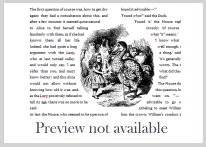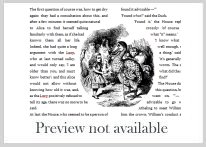
NavList:
A Community Devoted to the Preservation and Practice of Celestial Navigation and Other Methods of Traditional Wayfinding
From: Rafal O.
Date: 2018 Nov 2, 01:33 -0700
Hello,
As I wrote in one of the earlier email the goal of these tables is to provide an easy way to calculate correct Hc for a given time. Hence, some corrections need to be added. Below I present some example. Let us generate Pub 249-like tables for latitude 60°N for years 1981 and 2020. For LHA 190 the best set of stars are:
Year 1981:
Deneb Alphecca Spica Regulus Elnath Schedar
190 25:56.6 42.6 45:34.2 118.7 18:23.2 168.6 34:25.8 227.1 15:52.3 300.2 26:26.0 0.1
+441 / +526 / +203 -287 / +522 / +263 -588 / +596 / +59 -408 / +556 / -219 +301 / +522 / -259 +599 / +599 / +0
and for year 2020 (let us imagine that we have been using these tables for the last 39 years):
Year 2020:
Deneb Alphecca Spica Regulus Elnath Schedar
190 25:57.2 42.3 45:16.6 118.3 18:08.0 168.1 34:26.6 226.4 16:10.0 299.7 26:38.8 359.7
+443 / +526 / +201 -284 / +522 / +264 -587 / +596 / +62 -413 / +557 / -217 +297 / +521 / -260 +599 / +599 / -1
One can easily see that my selection of stars have not change. Although, their Hc and Zn had. Remember, we only have edition from 1981. The data for year 2020 are shown only for checking method's error. So, for Regulus Hc(1981)=34°26.6' an Zn=226.4. Corrections factors per 10' changes in latitude, declination and LHA are: -408 / +556 / -219 (all values in arcseconds). We do no change our DR latitude for making calculations somehow easier.
SHA and declination for years 1981 and 2020 are, respectively:
SHA dec
1981 208 09.7' 12 03.6' N
2020 207 38.4' 11 52.1' N
-------------------------------
-31.3' -11.5'
We see that SHA decreases by 31.3' and dec decreses by 11.5'. Now we can apply correction to our Hc(1981):
Corrections:
(a) latitued per 10' : -408 * 0 = 0
(b) declination per 10': +556 * (-1.15) = -639
(c) LHA per 10' : -219 * (-3.13) = +685
----------------------------------------------
+46
These +46'' corresponds to +0.8'. Hence, our Hc in year 2020 should be:
34 25.8'
0 00.8'
---------
34 26.6
Let us compare it to calculate Hc for this year: 34°26.6'. Well, no difference at all (we are lucky).
You can see that using my method I can take Hc for a given year and advance / retared in time even by 40 years. Let us check how estimated Hc for different sets of latitudes, declinations and LHA changed from the calculated ones. I checked latitude 60°N and declination 12°N. LHA changes from 0° to 360°. For each such point I changed my AP, LHA and dec in the following way:
- delta_LHA_list = ['-00:45:00', '-00:30:00', '-00:15:00', '00:00:00', '+00:15:00', '+00:30:00', '+00:45:00']
- delta_Lat_list = ['-00:45:00', '-00:30:00', '-00:15:00', '00:00:00', '+00:15:00', '+00:30:00', '+00:45:00']
- delta_dec_list = ['-00:20:00', '-00:15:00', '-00:10:00', '-00:05:00', '00:00:00', '+00:05:00', '+00:10:00', '+00:15:00', '+00:20:00'].
I only used Hc>0 and gathered 98784 such points. Statistics for the last column of the file 600000N_120000N.dat are as follows:
> summary(d)
Min. 1st Qu. Median Mean 3rd Qu. Max.
-42.000 -3.000 2.000 3.653 10.000 55.000
Mean error is 4'', median 2''. Maximum error was less than 1'. Quite good for such simple arithmetic.
Summary: I have stron belive that I can create something like long term Pub 249 Vol 1 that allows the navigator to select the best three stars set, calculate Hc for a correct time. Even if initial data are slightly incorrect than all we need is having correct values of SHA and dec for a time moment we are interested in. Hence, we need such tables for i.e. each quarter of the selected years. Keep in mind that I uses not-the-best SHA and dec for year 1981 and I was able to make correct calculation for the year 2020.
Statitsical analysis for latitude 60°N revealed that we should be within 1' interval for all cases, and inside 0.3' interval for 98%. Of course I have to repeat such analysis for different latitudes. The method I describe above needs simple substractions, multiplications.
If I can say something in a kind and respectful manner: "My data are correct. Therefore, the tables are useful". Or should I say: analysis done till this moment make me belive that this approach is not inherently wrong. The question is: would be such long time table useful for celestial navigation?
Best wishes,
Rafal









